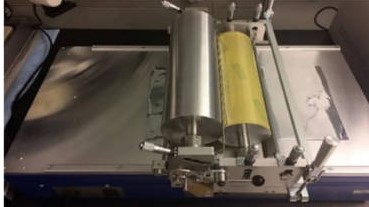Using AI to control energy for indoor agriculture
30 September 2024
Published online 14 August 2019
Device raises prospects for electricity-free cooling in urban environments.

Zhou, L., et al./Nature Sustainability
The approach is based on radiative cooling — a natural process that results from the emission of infrared light from an object on Earth through clear skies to outer space. Most commercial radiative cooling systems are limited to night use, mainly due to the difficulty of minimizing heat from the sun during the day. Recent designs using photonic structures or porous polymer films have demonstrated the feasibility of daytime cooling systems, but they are too expensive for commercial use.
The new system is a polydimethylsiloxane-coated aluminium film that is easy to fabricate, making it suitable for fast, industrial-grade, roll-to-roll manufacturing. The team also designed a shelter component to allow for 24-hour performance.
“So to make our system work under sunlight, we selected a spectral-selective material to build this shelter — one designed to control the direction of thermal emission and block sunlight simultaneously,” explains Qiaoqiang Gan of the State University of New York at Buffalo.
Pilot tests demonstrated that with this shelter, the system can provide all-day cooling of around 2–9 °C on a typical clear sunny day at northern United States latitudes.
Gan points out that the improved control over thermal emission means their system would work well even in crowded urban environments, where access to the sky is thwarted by surrounding buildings. Plans to commercialize the technology are underway.
doi:10.1038/nmiddleeast.2019.112
Zhou, L., et al. A polydimethylsiloxane-coated metal structure for all-day radiative cooling. Nature Sustainability https://doi.org/10.1038/s41893-019-0348-5 (2019).
Stay connected: